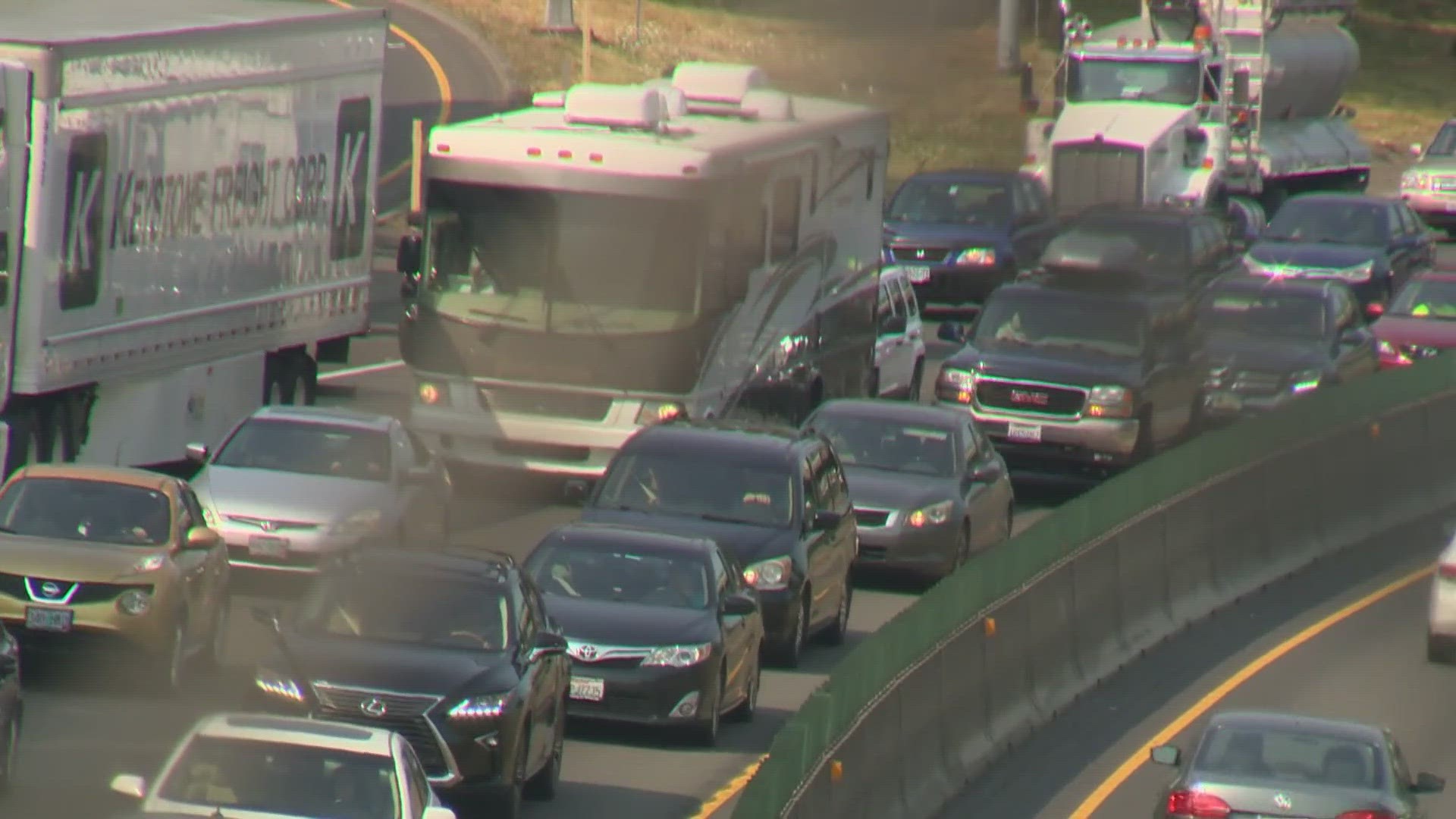CLEVELAND — As a swath of Northeast Ohio sits in the path of totality for the April 8 solar eclipse, authorities discussed their plans for public safety as the rare event is expected to bring an increase in visitors to our area.
In order for travel to go as smoothly as possible, state agencies are asking travelers to arrive early and stay late in order to avoid the heaviest traffic.
Officials from multiple agencies discussed eclipse plans during a 1 p.m. press conference, which can be watched below:
Those who spoke at the press conference included:
- Ohio State Highway Patrol Sergeant Bridget Matt
- Ohio Department of Transportation, regional public information officer Amanda McFarland
- Ohio Emergency Management Agency Regional Supervisor Bob Zehentbauer
- Ohio Turnpike & Infrastructure Commission Charles Cyrill
HOW DRIVERS SHOULD PREPARE
During the press conference, the Ohio Department of Transportation warned about the increased amount of travel in Northeast Ohio due to the solar eclipse, which is likely to cause delays.
"The roads are going to be very, very busy leading up to the eclipse and after the eclipse. So what we want folks to know is that they need to plan ahead. Ahead of the eclipse, we think that people are probably going to trickle in on Saturday and Sunday since it is hitting on a Monday, but once that eclipse ends, everyone is going to want to get home and they all are probably going to leave at the same time," said McFarland.
As a result, ODOT is asking motorists to do the following:
- Make sure your vehicle is filled with gas or charged
- Have snacks or water in your car
- Have a paper map on hand in case cell phone service is affected
Additionally, ODOT warned vehicles not to stop on the roadway in order to view the eclipse:
"No one should be stopped on the side of the roadway to watch the eclipse unless it is an emergency situation that they must pull over for," said McFarland.
ODOT will also be treating the solar eclipse like a major travel holiday, by restricting roadwork and reducing the size of active work zones to accommodate extra traffic.
WHERE TO WATCH THE ECLIPSE
The Ohio State Highway Patrol stressed that the most important part of everyone's plan for April 8 is choosing a designated viewing location.
OSHP officials are asking drivers to establish a "well-thought-out plan" that includes departure time and routes.
"Designated viewing areas are recommended to avoid the dangers of impromptu stops along the highway and exit ramps. Remember, stopping on the side of the road for viewing purposes is strictly prohibited and unsafe," said Matt.
Akron and Cleveland are both among the communities sitting in the path of totality. Here’s when you can watch…
AKRON
- Partial eclipse begins: 1:59:09 p.m.
- Totality begins: 3:14:13 p.m.
- Maximum eclipse: 3:15:38 p.m.
- Totality ends: 3:17:02 p.m.
- Partial eclipse ends: 4:29:05 p.m.
CLEVELAND
- Partial eclipse begins: 1:59:22 p.m.
- Totality begins: 3:13:45 p.m.
- Maximum eclipse: 3:15:40 p.m.
- Totality ends: 3:17:35 p.m.
- Partial eclipse ends: 4:29 p.m.
RELATED: Dark in the park: Cleveland Guardians to start April 8 home opener following total solar eclipse
What time is the eclipse happening in your area? We have a lengthy list with various communities across Northeast Ohio that you can check HERE.
Here's how NASA briefly explains the science behind a solar eclipse...
Solar eclipses occur when the Sun, the Moon, and Earth line up, either fully or partially. Depending on how they align, eclipses provide a unique, exciting view of either the Sun or the Moon.
A solar eclipse happens when the Moon passes between the Sun and Earth, casting a shadow on Earth that either fully or partially blocks the Sun’s light in some areas. This only happens occasionally, because the Moon doesn't orbit in the exact same plane as the Sun and Earth do. The time when they are aligned is known as eclipse season, which happens twice a year.

